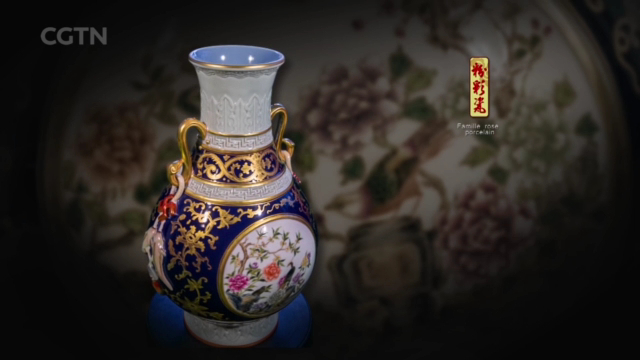
19:20, 13-Jun-2019
Ware of the World: Porcelain connects China to the world
Updated
17:30, 09-Jul-2019

When it comes to porcelain, the word "china" comes right into people's mind. Its production process conveys ancient Chinese wisdom, incorporating the five-element concept of gold, wood, water, fire and earth. As the first global commodity in the history of human trade, porcelain is regarded as the "the ware of the world" that carries the interaction between east and southwest Asian, as well as European civilizations. Next, let's go to the National Museum in Beijing to learn more about the stories behind the exquisite ceramic artworks from the Belt and Road countries.
234 porcelain relics from 12 Silk Road countries are on display. And this piece made in China in the 13th century is from the National Museum of the Sultanate of Oman.
YANG GUIMEI, RESEARCHER NATIONAL MUSEUM RESEARCH INSTITUTE "In fact, Yuan blue and white porcelain was more suited to the lifestyle of people living in the Persian countries, bigger sizes with a combination of Han culture and Persian elements."
In retrospect, the Yuan Dynasty, around over 700 years ago, witnessed a technological leap in producing porcelain. Today, Jingdezhen, also known as "the capital of porcelain" in China, has seen another technological step forward. For the first time, artisans used the binary method of kaolin and porcelain clay in porcelain tires, a pivotal moment in the history of Chinese porcelain industry.
Porcelain and its production techniques attracted and still attract overseas ceramic enthusiasts to "capital of porcelain". Philip Read is one of them.
He succeeded in combining the British watercolor painting and Chinese ink painting with the blue-and-white porcelain firing technique. After years of practice and renovation, Philip Read has become the first artist from the western world to use Chinese painting skills in porcelain.
As Read put it, ceramics witnessed friendship as well as the exchanges of civilizations. Imari porcelain is precisely the best evidence of mutual understanding between China, Japan and Europe.
JIANG JIANXIN, DIRECTOR JINGDEZHEN CERAMIC ARCHAEOLOGICAL INSTITUTE, JIANGXI PROVINCE "The Japanese Imari style was first learned from the Jingdezhen 400 years ago when the blushing-gold painting process was popular. After that, Imari craftsmen produced porcelain completely according to this process. After centuries that followed, craftsmen from Europe, Jingdezhen and Imari exchanged techniques which combined European aesthetics with Jingdezhen ceramic crafting technique and Japanese imitations. So these exhibits show us the relationship between those cultures in the old times."
Porcelain defines Chinese wisdom, and it is also a bridge connecting China and the world. In the past, Jingdezhen created the pinnacle of human ceramic art. Today, the city has become a hot spot to stimulate the infinite possibilities of contemporary art innovation, and of course, via porcelain. QIJIE, CGTN.
SITEMAP
Copyright © 2018 CGTN. Beijing ICP prepared NO.16065310-3
Copyright © 2018 CGTN. Beijing ICP prepared NO.16065310-3